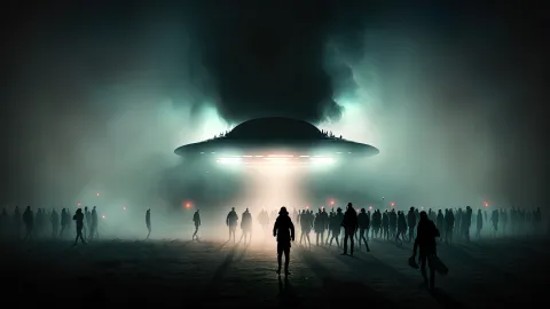The current head count of exoplanets has reached 5,438 with 9,600 suspects waiting in the wings. And that’s with the James Webb Space Telescope (JWST) still spreading its wings as it searches for habitable worlds orbiting stars near and far in the Milky Way. While most exoplanets found remain unsuitable for life as we know it here on Earth, more are being found in habitable Goldilocks Zones surrounding stars.
How do you pick candidates from this growing number of planets that should be studied in greater depth in the search for extraterrestrial (ET) life? The JWST can analyze the atmospheres of rocky and gas giant planets circling their parent stars. It can detect the elements that could reveal biosignatures. Machine learning, however, can be used to sift through mountains of data to determine the biogenicity of organic chemistry detected in physical samples or data collected from the JWST and other tools that study exoplanets.
Machine learning is a form of artificial intelligence (AI). An algorithm is created and designed to analyze data in search of specific information. Machine learning works much faster than any human when presented with mountains of unstructured and structured information. And as a form of AI, it just seems to be an appropriate tool to use to ferret out ET.
The latest machine learning advance related to studying Mars and other planetary bodies in a search for past and present ETs is being referred to as “the Holy Grail.” Led by scientists from
A team of scientists led by the Carnegie Institution for Science, Purdue University, John Hopkins University, the Tokyo Institute of Technology and the Blue Marble Space Institute for Science have developed a test to determine if past or present life exists on other planets. It is deemed to be 90% accurate in being able to distinguish biology both past and present from sampling data. In other words, it can find ET. The results have been published in the last month in the Proceedings of the National Academy of Sciences (PNAS).
Stated Robert Hazen of the Carnegie Institution for Science, in Washington, DC, “This routine analytical method has the potential to revolutionize the search for extraterrestrial life and deepen our understanding of both the origin and chemistry of the earliest life on Earth.” He continued, “It opens the way to using smart sensors on robotic spacecraft, landers and rovers to search for signs of life before the samples return to Earth.”
The test uses pyrolysis-gas chromatography combined with mass spectrometry to do sampling. It was trained using living cells, fossil organic material, laboratory-synthesized organic compounds, and carbonaceous meteorites and was able to identify “biogenicity” in present-day and ancient geological samples with ~90% accuracy.
What is biogenicity? Any living thing both past and present when interacting with its surrounding environment leaves telltale signatures. That means this new test can be used to study samples already collected by both the Mars Curiosity and Perseverance rovers.
The researchers describe three big takeaways related to biogenicity.
- Biochemistry differs from non-biological or abiotic organic chemistry.
- Mars and ancient Earth samples can tell us if there was past life or present life.
- An AI algorithm should be capable of distinguishing past or present life from sampling data collected from other planets or space.
The AI developed for detecting the presence of past or present life searches for subtle differences in molecular patterns to conclude whether something is or was alive. The training involved exposing the AI to 134 known abiotic or biotic Earth samples.
The proof in the pudding will come when the AI gets to sample data from Mars or other sites. Robert Hazen asks some interesting questions such as “If AI can easily distinguish biotic from abiotic, as well as modern from ancient life, then what other insights might we gain? For example, could we tease out whether an ancient fossil cell had a nucleus, or was photosynthetic?… Could it analyze charred remains and discriminate different kinds of wood from an archeological site? It’s as if we are just dipping our toes in the water of a vast ocean of possibilities.”
















